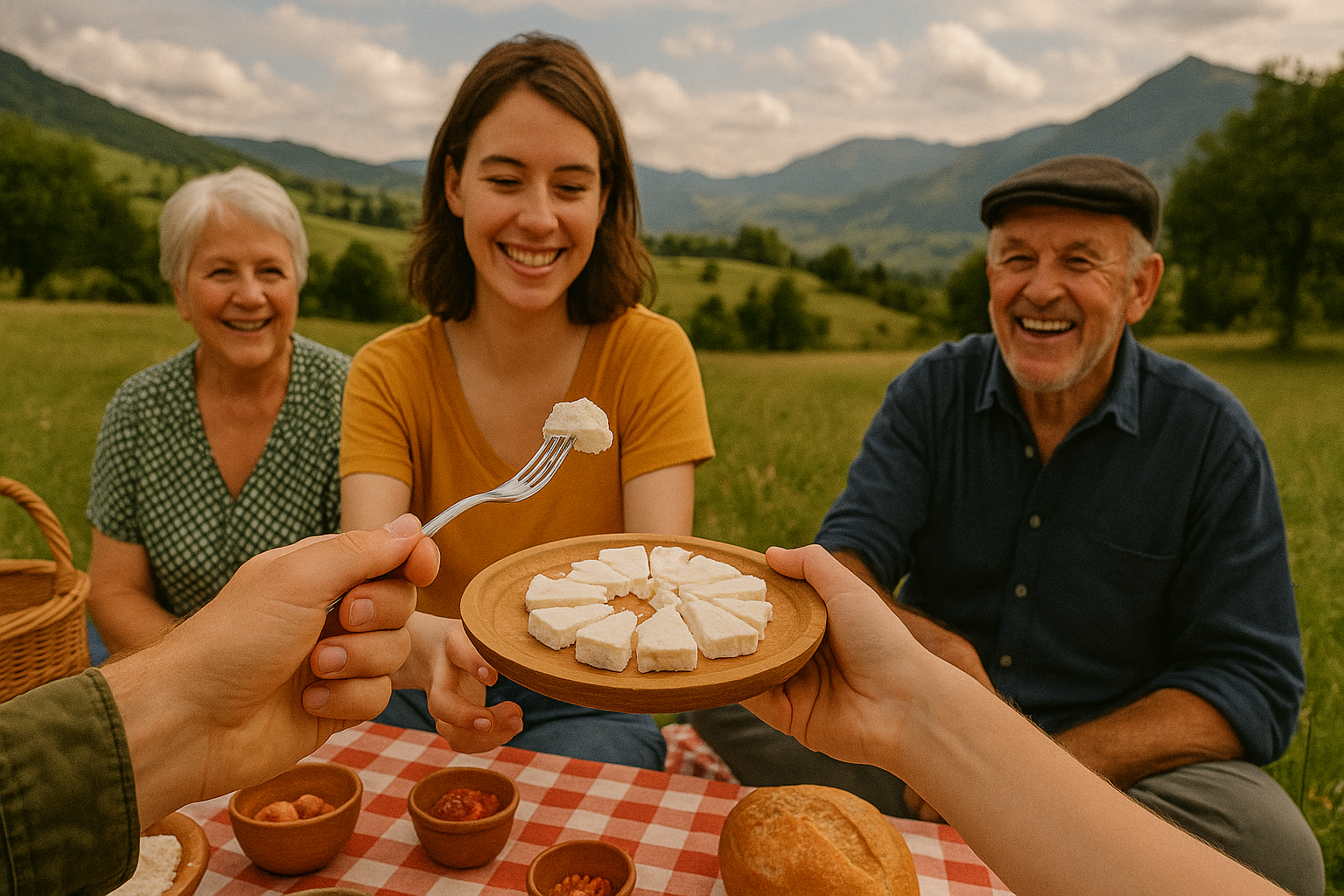There’s something magical about tasting local cheeses while traveling. It’s one thing to visit landmarks and take photos—it’s another to discover the creamy, crumbly, or pungent flavors that tell the story of a place. Tasting local cheeses reveals more than taste: it opens doors to centuries-old traditions, farming practices, and cultural pride.
Whether you’re wandering a street market in France or hiking through the Balkans, you’ll find that cheese often bridges the gap between traveler and local. And it’s not just about trying something new—it’s about discovering flavors tied to weather, grass, cows, and aging cellars that are sometimes older than your country. Curious yet?
Why Local Cheese Tells a Bigger Story
Cheese is one of the world’s oldest preserved foods. Before refrigeration, it allowed milk to survive the journey from farm to family table. That alone is amazing. But even more fascinating is how every country developed unique styles depending on their environment and needs. From smoked cheeses in cold mountain towns to soft, fresh cheeses in warm Mediterranean regions—every bite is a time capsule.
So, if you’re someone who enjoys going deeper than typical travel guides, consider this your passport to some of the world’s most flavorful traditions. This isn’t just a Tasting Local Cheeses tour—it’s a global, creamy adventure.
France: The Spiritual Home of Cheese
It’s nearly impossible to talk about cheese without starting in France. The country has over 1,000 cheese varieties and has elevated cheese to something just shy of religion. Every region offers its own hero—from the ash-covered goat cheese of Loire Valley to the cave-aged Roquefort from southern France. And of course, the classics like Brie, Camembert, and Comté continue to rule cheese boards worldwide.
Where to Go and What to Try
Head to Normandy for Camembert that melts on your tongue or Alsace for Munster with a spicy rind. Paris is a perfect base too—don’t miss Fromagerie Quatrehomme, one of the city’s legendary cheese shops. You’ll be amazed how different a cheese can taste when it’s aged in a cellar right beneath your feet.
Italy’s cheese culture is rich and regionally diverse. North to south, each area produces cheeses reflecting its climate, culture, and cuisine. While Parmigiano-Reggiano may be the most iconic, it’s just the beginning.
Head to Emilia-Romagna to tour a Parmigiano aging house—seeing those massive wheels stacked 20 feet high is unforgettable. Don’t leave Tuscany without trying Pecorino aged in caves or covered in herbs. In Puglia, Burrata is king. Its creamy inside and delicate outer shell create a perfect contrast. If you’re lucky, you’ll get to eat it just hours after it’s made. Want adventure? In Sardinia, the infamous Casu Marzu is an aged pecorino containing live larvae. Definitely not for everyone, but undeniably authentic.

Switzerland: Alpine Altitude in Every Bite
Swiss cheese is more than fondue. While Gruyère and Emmental get the most attention, smaller producers in the Alps make extraordinary cheeses by hand, often using techniques passed down for generations. Aging takes place in cool mountain cellars, often at altitudes over 1,000 meters.
Stop by Fromagerie d’Alpage for a live demo of traditional cheese-making in copper vats. And don’t forget Raclette—melted and scraped over potatoes, it’s the food equivalent of a warm blanket after a hike.
Spain: Bold, Salty, and Satisfying
Spanish cheese often gets overshadowed by the country’s wine and ham, but that’s starting to change. With regional gems like Cabrales—a blue cheese aged in limestone caves—or Idiazabal from the Basque region, Spain offers intense, rustic flavors that pair beautifully with local wines.
For an urban tasting experience, visit La Formatgeria in Barcelona. It’s a tiny shop packed with big flavors. Sample Mahón, Tetilla, and Torta del Casar—cheeses with creamy insides and earthy tones that linger on your palate.
Balkans: Fresh, Salty, and Surprisingly Addictive
In the Balkans, cheese is a staple, not a luxury. From Serbia to Albania, most households produce or buy local white cheeses like sirene (similar to feta) or kajmak, a rich, spreadable cream. These cheeses are part of everyday life, served with grilled meats, warm bread, and salads.
Try visiting open-air markets in Montenegro or village cheese stalls in Bosnia. You may not find a label, but the experience will be one of the most authentic of your trip.
Middle East & North Africa: Light, Bright, and Briny
From Jben in Morocco to Labneh in Lebanon, the cheeses here are fresh and often made from goat or sheep milk. They’re bright, salty, and frequently eaten for breakfast. Fried Halloumi is a fan favorite in Cyprus, with its squeaky texture and golden crust when grilled. Don’t overlook Nabulsi and Akkawi, two Palestinian cheeses that work beautifully in both savory and sweet dishes. Their high melting point also makes them perfect for frying.
While the cheese scene in North America is relatively young, it’s bold and experimental. Vermont, Wisconsin, and California lead the way with award-winning bries, blues, and clothbound cheddars. In Canada, Quebec’s Bleu Bénédictin or Ontario’s Monforte Dairy offerings are must-tries.
To map out your next cheese journey, use Cheese Trail, a curated guide to cheese farms, tours, and events across North America. Trust us—you’ll be impressed. Which local cheese took you by surprise during your travels? We’d love to hear about it in the comments. And hey, follow us on social media so you never miss a bite-sized travel story again!
Catch up on the top stories and travel deals by subscribing to our newsletter!












Leave a Reply